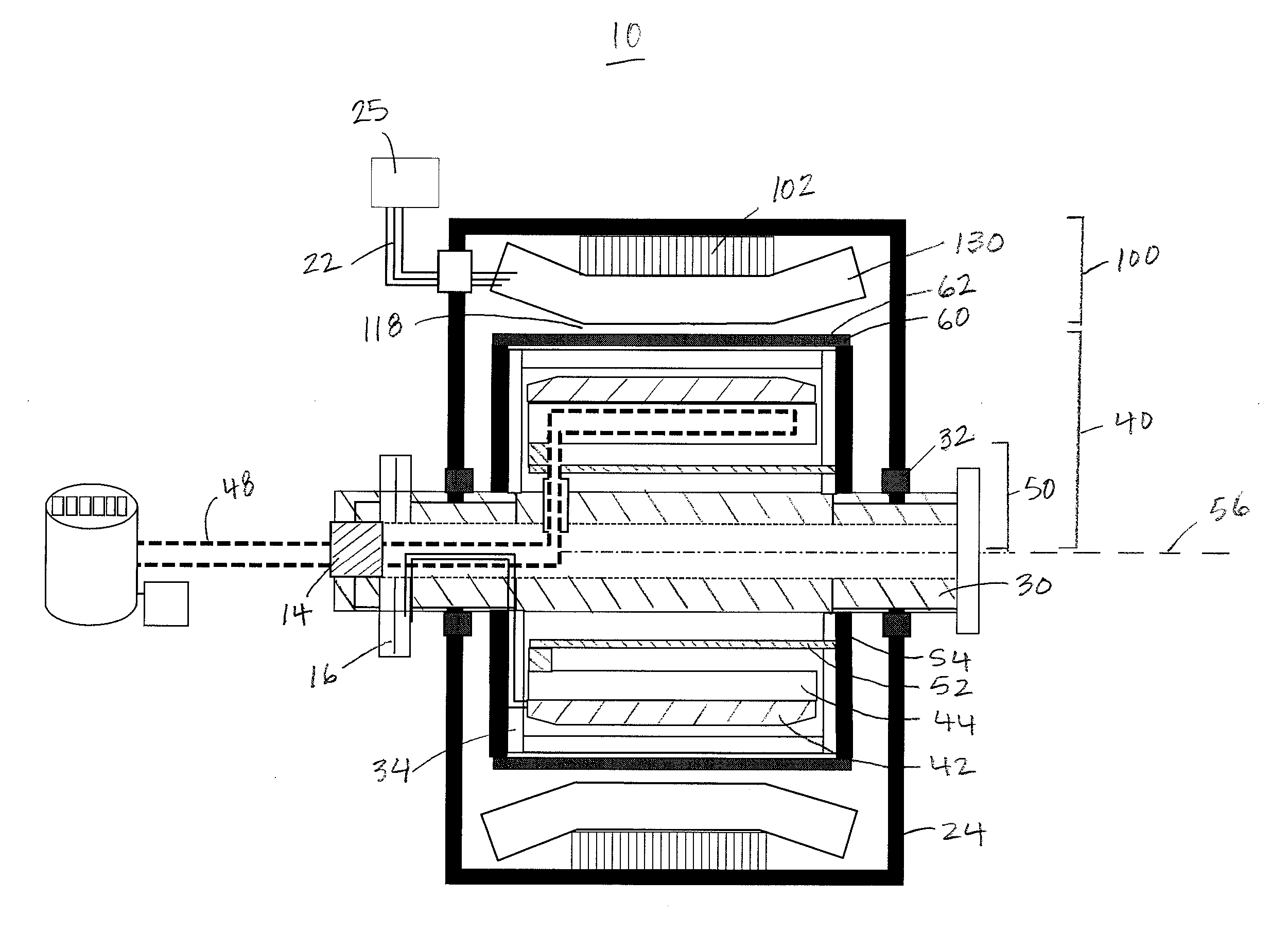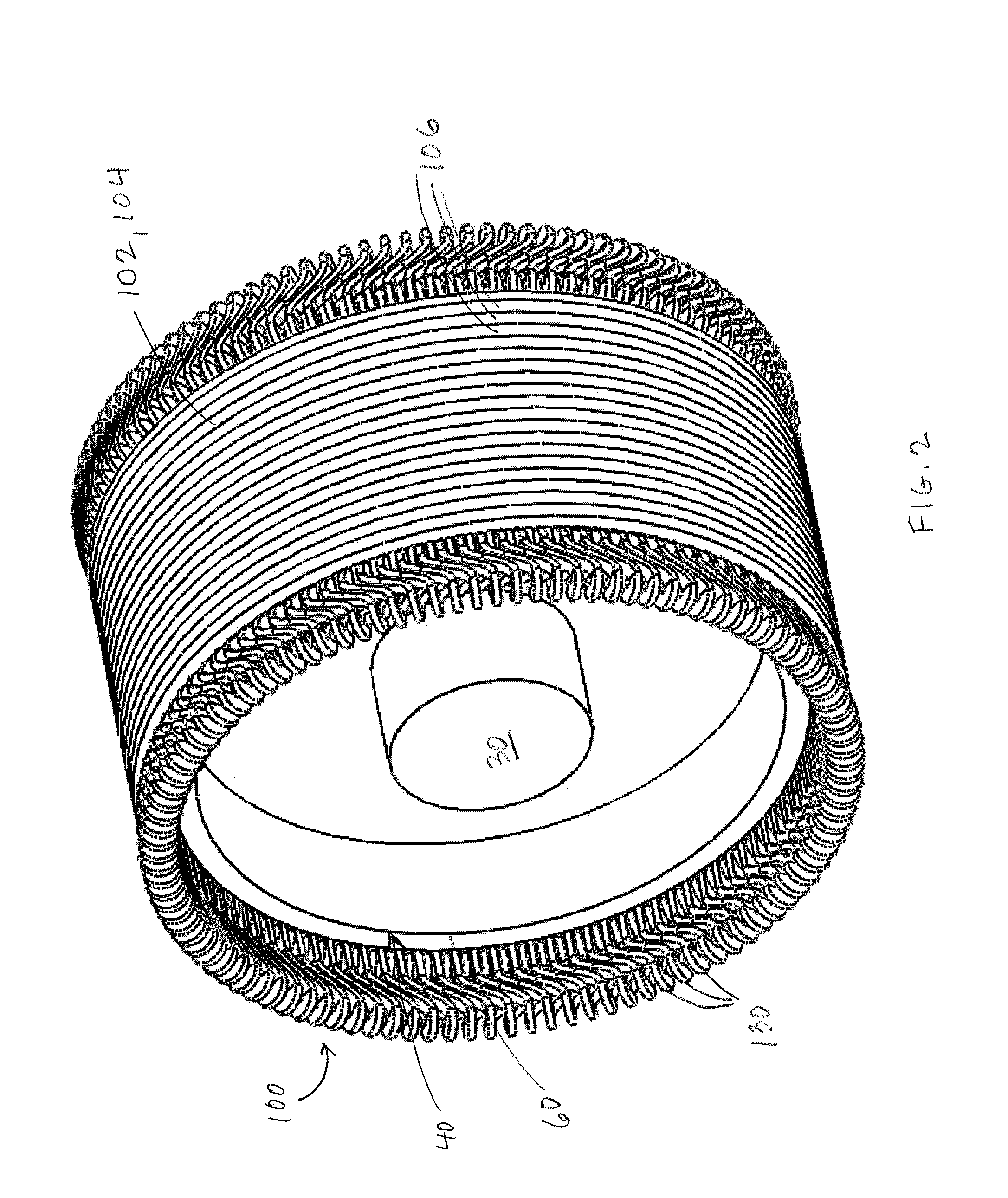Generator with ferromagnetic teeth
a technology of ferromagnetic teeth and generators, which is applied in the direction of electric generator control, magnetic circuit rotating parts, magnetic circuit shape/form/construction, etc., can solve the problems of high losses due to saturation of iron teeth, increased densities, and significant increase in the magnetomotive forces generated by windings and other problems, to achieve the effect of low cost, increased overall performance, and reduced cos
- Summary
- Abstract
- Description
- Claims
- Application Information
AI Technical Summary
Benefits of technology
Problems solved by technology
Method used
Image
Examples
Embodiment Construction
[0031]Referring now to FIG. 1, generator 10 is a rotating superconducting machine that includes a rotor assembly 40 mounted within a stator assembly 100. As will be described in greater detail below, the generator 10 is configured for use in low frequency applications of 10 Hz or less. For example, when generator 10 is used as a generator in a wind turbine, the rotor and stator assemblies 40, 100 are configured to operate at about 2 Hz.
[0032]The rotor assembly 40 includes rotor windings 42 formed of a high-temperature superconductor (HTS), a torque transfer system 50, and an electromagnetic shield 60. The rotor windings 42 are supported by a rotor winding support structure 44 within a cryostat 34. Although other configurations are possible, the rotor windings 42 of this embodiment include several HTS sub-coils formed in a racetrack configuration. U.S. Pat. No. 6,509,819, the entire contents of which are incorporated herein by reference, discusses exemplary rotor coil configurations ...
PUM
 Login to View More
Login to View More Abstract
Description
Claims
Application Information
 Login to View More
Login to View More - R&D
- Intellectual Property
- Life Sciences
- Materials
- Tech Scout
- Unparalleled Data Quality
- Higher Quality Content
- 60% Fewer Hallucinations
Browse by: Latest US Patents, China's latest patents, Technical Efficacy Thesaurus, Application Domain, Technology Topic, Popular Technical Reports.
© 2025 PatSnap. All rights reserved.Legal|Privacy policy|Modern Slavery Act Transparency Statement|Sitemap|About US| Contact US: help@patsnap.com



